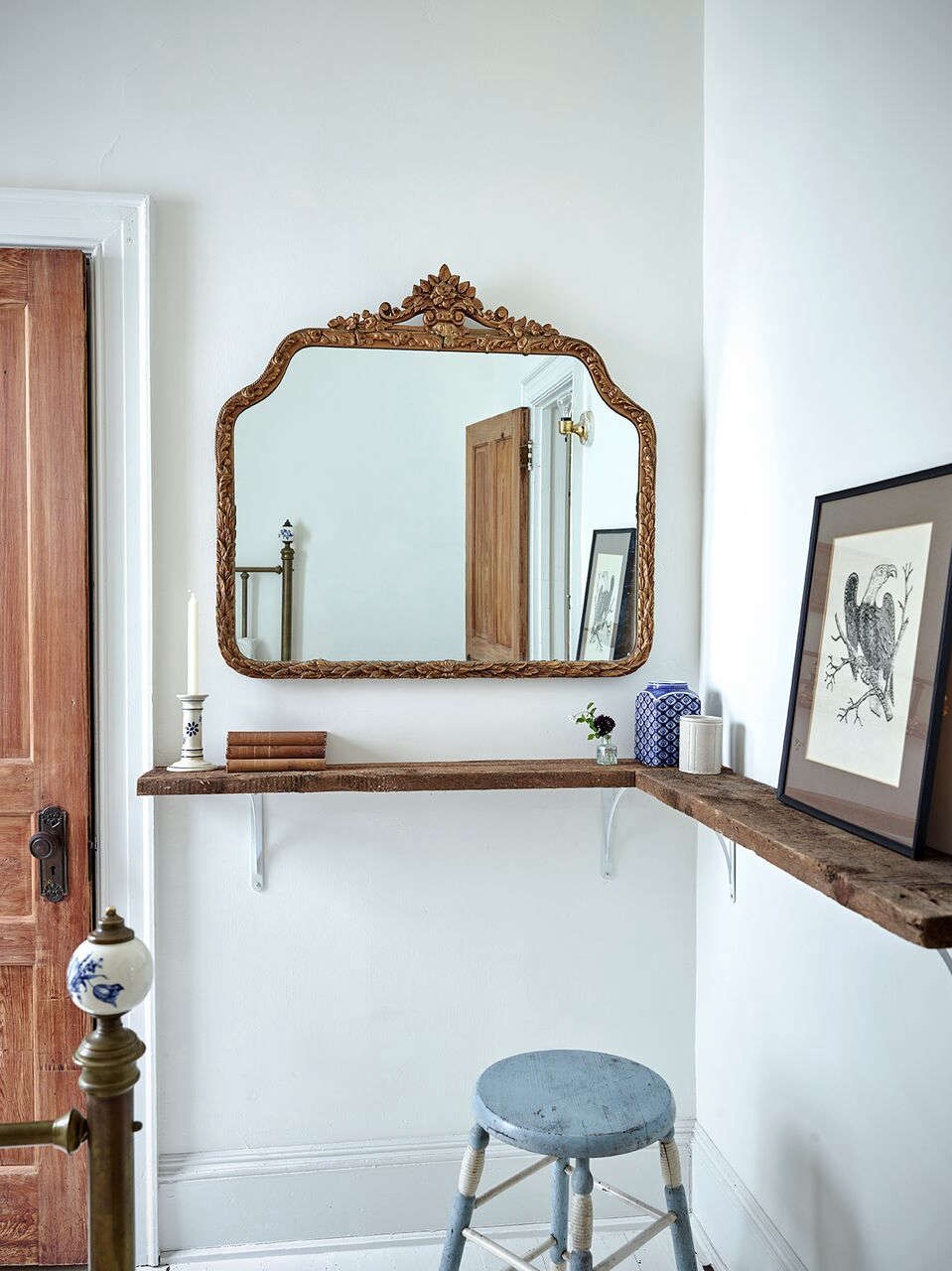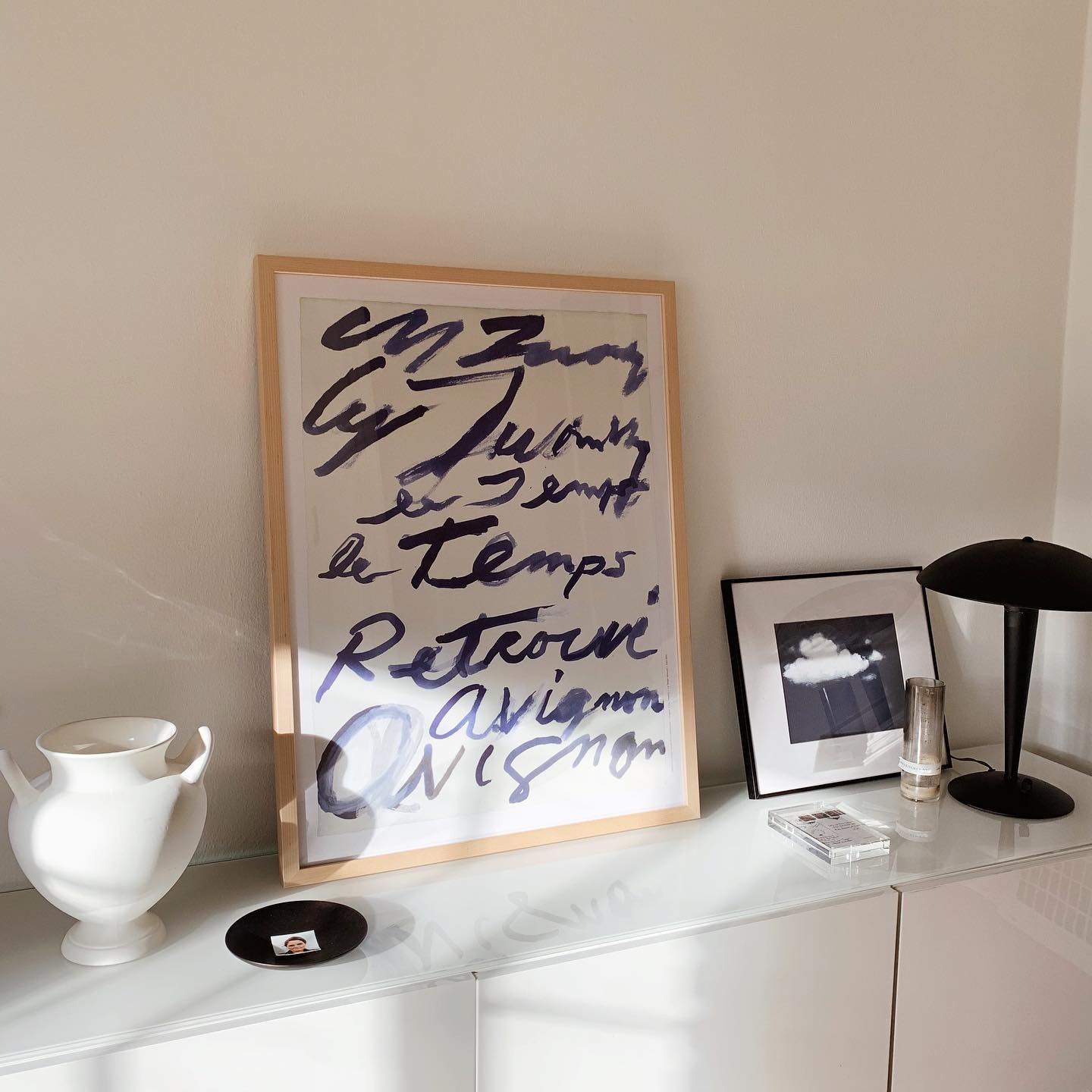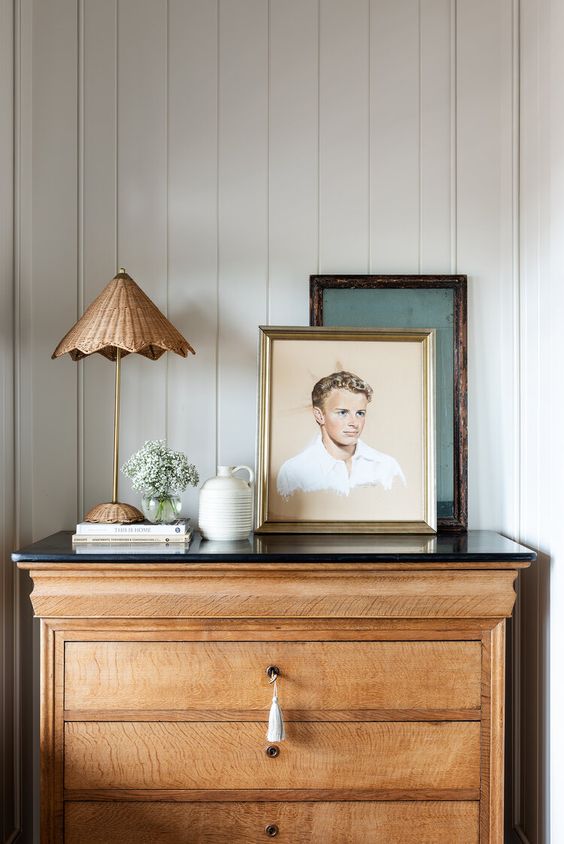

IN THE NEW living room, there is a marble fireplace with a large mantel that we’re still trying to figure how to decorate. Currently, there is a large pelargonium in a terracotta pot on the lefthand side, as well as a tiny cutting from a larger epipremnum pictum argyraeus in a pot next to it. On the rest of the space, we have framed art leaning on the marble mantel and against the wall, waiting to be hung. However, the longer it sits there like that, the more we’re thinking we might leave it. Displaying art by leaning, rather than hanging, can offer a unique and contemporary approach to showcasing artwork. It is also a great option for temporary displays if you’re in the process of moving or renovating, providing an ephemeral yet visually appealing way to showcase artwork until a permanent hanging solution is available. In this article, we’ll take a closer look the case for leaning art, including versatility, accessibility, and more…

Versatility
Leaning artwork provides greater flexibility and versatility in terms of placement and arrangement. Unlike traditional hanging, leaning allows you to easily move and reposition the artwork as desired. You can experiment with different angles, heights, and groupings, adapting the display to suit your changing preferences or the evolving aesthetics of a space.


Casual and Relaxed Aesthetic
Leaning artwork has a more casual and relaxed aesthetic compared to traditional hanging, creating an effortlessly chic and modern vibe by adding an element of informality to a space. This style works particularly well in contemporary, minimalist, or eclectic interiors, where a more laid-back approach to art is desired.


Non-Intrusive Installation
Leaning artwork eliminates the need for drilling holes in walls or using hooks and nails, making it a preferred choice for those who prefer to avoid wall damage, such as renters or those who frequently change their artwork or living arrangements. Additionally, leaning art can be an excellent solution for uneven or difficult-to-mount walls, such as tiled, brick or concrete.



Easy Accessibility
Leaning art allows for easy accessibility and encourages interaction with the artwork. Viewers can get closer to the pieces, appreciate details, and engage with it in a more intimate way by removing the need to crane their necks or strain their eyes to view a painting at an awkward height. Leaning art creates a more immersive experience and invites people to explore and appreciate the work from different perspectives.



Layering and Mixing
Leaning art opens up opportunities for layering and mixing various pieces together. You can lean different-sized pieces against one another, creating a dynamic interplay of colours, shapes, and textures. This technique enables you to curate your own unique gallery wall without the complications and constraints of symmetrical hanging arrangements.



Experimentation and Adaptability
And finally, leaning artwork encourages experimentation with different mediums and formats, offering an opportunity to display unconventional pieces such as framed textiles, posters, mirrors, or even mixed with other objects such as sculptures, found items, collectibles, and even natural elements such as rocks and seashells. The adaptability of leaning framed art allows you to showcase different types of art and adapt the display to match the evolving collection or the overall design scheme.
